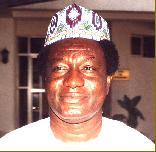
In the intricate dance of creative writing, few decisions are as pivotal as determining where, and with whom, your story truly begins. The adage, “When you know the core of your story, it becomes easier to identify which of your characters has the burden of opening the window into the narrative,” isn’t just a truism; it’s a fundamental principle that underpins effective storytelling. The character who first speaks, acts, or is observed holds immense power, shaping not only the reader’s initial perception of the world but also establishing the tone, stakes, and central conflict that will unfold.
The “core of your story” is its beating heart—the central theme, the primary conflict, the driving question. Is it a tale of profound loss and redemption? A high-stakes political thriller? A nuanced exploration of family dynamics? Once this essence is clear, the path to choosing your opening character becomes significantly clearer. This isn’t about simply picking the protagonist; it’s about identifying the character whose perspective offers the most immediate and impactful access to that core.
Consider a story centered on a devastating societal collapse. While the ultimate hero might be a determined survivor, the most potent opening might come from a character experiencing the very first tremors of the catastrophe—perhaps a scientist observing an anomaly, or an ordinary citizen grappling with an inexplicable disruption. Their initial confusion, fear, or dawning realization directly conveys the core theme of societal vulnerability. Conversely, if the core of the story is an intensely personal journey of self-discovery, opening with the protagonist already on the cusp of a significant internal shift, even if subtly hinted at, immediately draws the reader into their interior world.
The character bearing the “burden of opening the window” serves multiple crucial functions. First, they are the “initial point of identification” for the reader. Their emotional state, their immediate surroundings, and their initial actions become the reader’s entry point into the narrative. If this character’s experience doesn’t resonate with the story’s core, the opening can feel disconnected, forcing the reader to work harder to understand the true purpose of the narrative.
Second, this character dictates the “initial narrative perspective and voice”. An opening through the eyes of a cynical detective will feel vastly different from one filtered through the wonder of a child, or the detached observation of an omniscient narrator. Each choice subtly, but powerfully, signals the kind of story that is about to unfold. If the story’s core is a dark mystery, a world-weary detective’s jaded perspective might be the perfect fit to set the tone.
Finally, the opening character often introduces the “inciting incident or the seeds of conflict”. They might be the recipient of a life-altering message, witness a pivotal event, or simply be in a position where the central tension of the story is immediately evident. Their initial interaction with the world should hint at the larger forces at play, drawing the reader deeper into the narrative’s central question.
Ultimately, choosing the right character to open the narrative is not a random act; it’s a deliberate craft decision rooted in a deep understanding of your story’s essence. When the core is clear, the character best suited to unlock its mysteries and invite the reader into its world will emerge, bearing the essential burden of that crucial first impression. It is through their eyes, their voice, or their immediate circumstances that the story truly begins to breathe.
*Shehu is the author of four poetry collections, Questions for Big Brother, Open Sesame, Icarus Rising and The River Never Returns. He is a co-founder of the Abuja Writers Forum (AWF).


